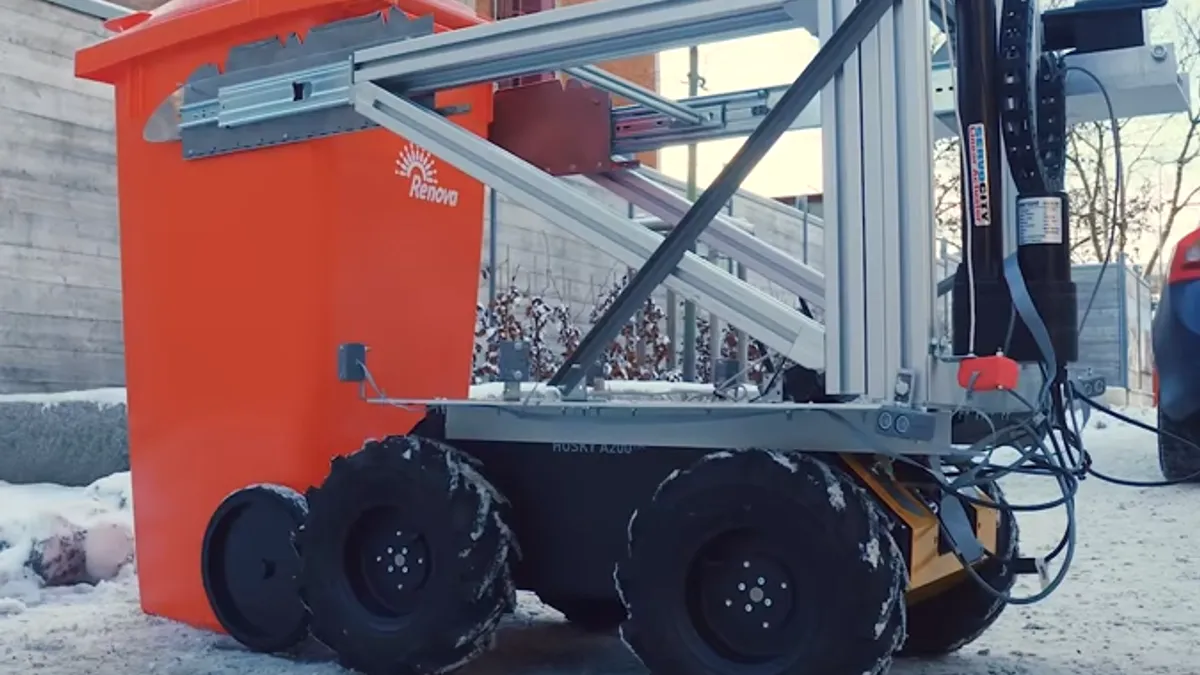Dive Brief:
- Volvo — in collaboration with Ontario-based recycling company Renova and universities in Sweden and the U.S. — has created a prototype of a small, autonomous robot dubbed "ROAR" (Robot-based Autonomous Refuse handling).
- The concept is operated by a drone that dismounts from the top of a garbage truck. This small, unmanned aerial vehicle (UAV) identifies trash-filled receptacles and lets ROAR know their location. GPS, cameras, infrared radar, accelerometers, and gyroscopes assist in navigation and lifting, though the truck driver is ultimately in control, monitoring the robot’s performance and progress and able to shut it down if necessary.
- The robot must be programmed to include information on neighborhoods and roads of the test areas so it can find bins and plan its route.
Dive Insight:
The concept of using robots to make collections more automated is gaining traction. Elsewhere robotic arms lift trash carts, placing them into trucks, and industry experts say the technology will be big this year. A major factor driving automated collections is worker safety, with drivers staying in their vehicles, avoiding risk for slipping on ice and injuries while lifting.
"We predict a future with more automation," said Per-Lage Götvall, project manager for robot development in the Volvo Group, in a statement. "This project is intended to stimulate our imagination, to test new concepts that may shape transport solutions of the future."
The robotic arms already on the market come with the added benefit of improved waste volume control as containerized systems help limit overages.
But new concepts need some time in the field to be proven as was seen through a shaky automated collection rollout in Orange County, FL. And ROAR has a way to go to prove it can tackle very legitimate issues that do call for innovation.














